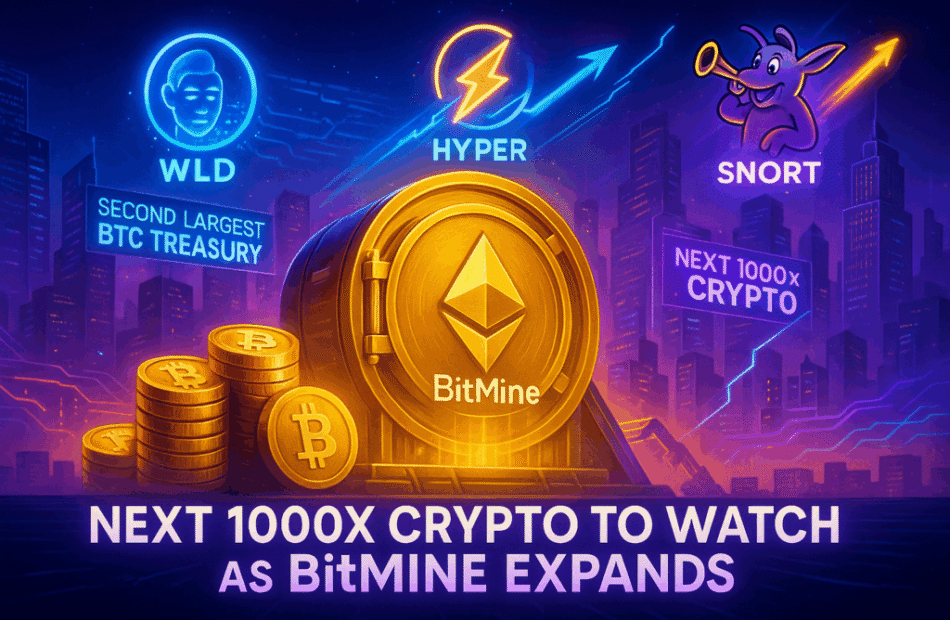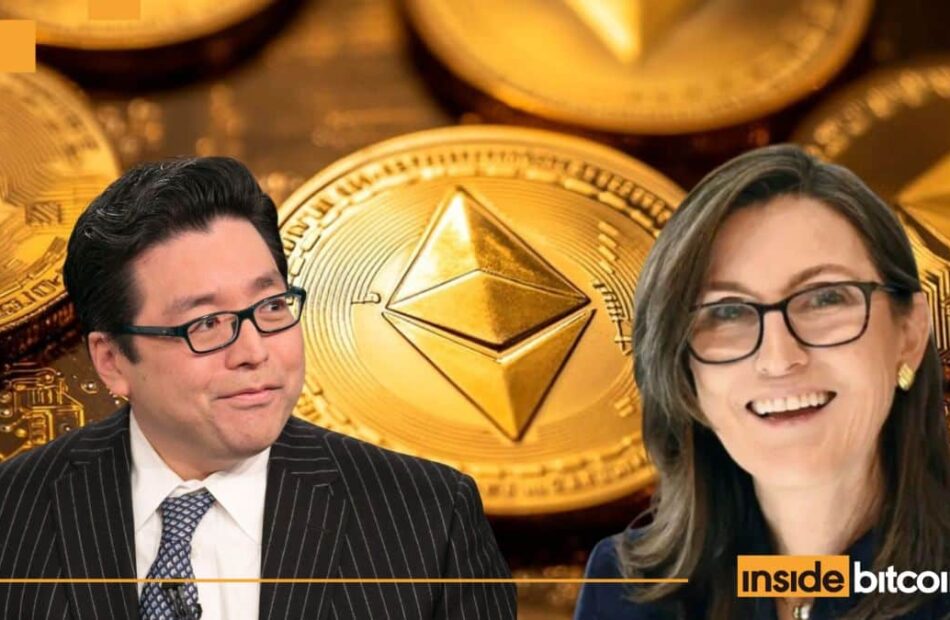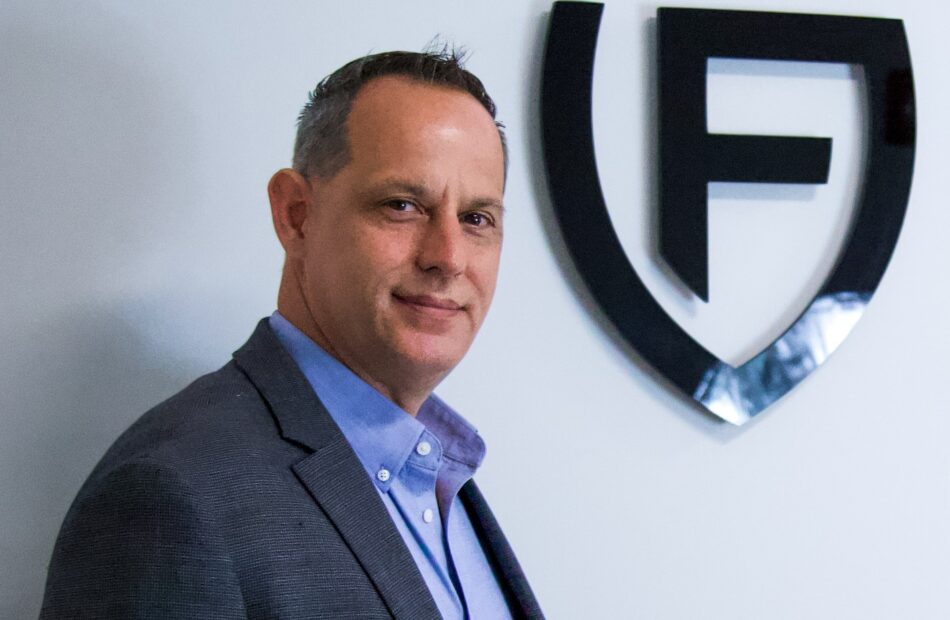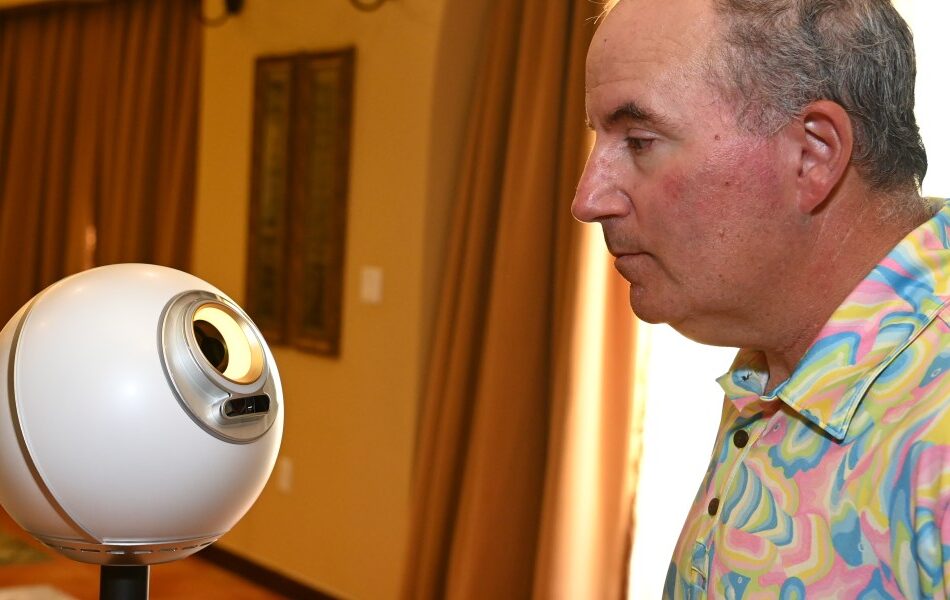Building Winning Crypto Teams in a Rapidly Evolving Space
In the fast-moving world of cryptocurrency, building strong growth and business development (BD) teams is more important than ever. Success depends on hiring smart, versatile people—especially those who understand both how products work and how to generate revenue. These kinds of well-rounded individuals, often called polymaths, are key for crypto startups and companies that want to scale effectively.
Unlike traditional tech companies, blockchain businesses need a different approach to hiring. What works in other industries doesn’t always apply here. The ideal candidate for a crypto BD or growth team depends on the company’s goals and the type of blockchain it operates on. For example, a public blockchain that wants to grow its user base and increase Total Value Locked (TVL) needs people with a deep understanding of user acquisition. On the other hand, a company offering infrastructure for fintechs integrating crypto will need people who can handle complex partnerships and tech integrations.
Privacy is another hot topic in the blockchain space. Many people think blockchains make everything public, but that’s not entirely true. While blockchain is built on transparency, there are tools like zero-knowledge proofs and advanced cryptography that help protect user privacy. These technologies create a balance between privacy and security, making blockchain useful not just for financial transactions but also for things like digital identity and AI applications.
There are also exciting new developments pushing blockchain technology forward. One example is a tool called Jolt, developed by a16z crypto. Jolt is a zkVM (zero-knowledge virtual machine) that’s recently gotten much faster thanks to improvements in memory-checking systems. It now supports over 1 million RISC-V cycles per second on powerful CPUs, which means faster and more efficient blockchain operations.
In a groundbreaking move, the U.S. Commerce Department has started publishing important economic data—like GDP—on nine public blockchains, including Bitcoin and Ethereum. This marks the first time a government agency has used blockchain to share such information, showing how this technology can boost transparency and efficiency in data reporting.
If you’re involved in the crypto space or thinking about hiring for your team, it’s important to understand these trends. The right talent, combined with the latest tech advancements, can make a big difference in long-term success.
BitMine Bets Big on ETH, Worldcoin, HYPER & SNORT
BitMine Immersion Technologies just made a huge splash in the crypto world. The company now holds a massive $9.2 billion in assets, making it the second-largest crypto treasury globally—only behind Michael Saylor’s Strategy (formerly MicroStrategy). What’s more impressive? BitMine is now the largest holder of Ethereum in the world.
Their balance sheet shows they own about 2.069 million ETH (worth roughly $9.03 billion), 192 Bitcoin (around $21.6 million), and $266 million in cash. Back in June, BitMine shifted its strategy to focus on Ethereum and set a bold goal: own 5% of all ETH. While that seemed overly ambitious, they’ve already reached 1.7% of the total ETH supply.
In addition to Ethereum, BitMine made headlines by investing $20 million into Eightco Holdings (OCTO), which has chosen Worldcoin (WLD) as its main crypto holding. This move caught investors’ attention and sparked a rally. OCTO stock shot up over 3,200%, and WLD jumped more than 100%, now trading close to $2.
Worldcoin stands out because it’s focused on AI, digital identity, and “proof of personhood” using its unique orb-scanning technology and the World App. Although some people are skeptical about its biometric approach, big institutional backing from companies like BitMine gives WLD a serious credibility boost.
From an investment point of view, Worldcoin is a medium-risk, high-reward bet that fits well with BitMine’s broader Ethereum-focused strategy.
While BitMine is betting big on Ethereum and Worldcoin, another project worth watching is Bitcoin Hyper (HYPER). This upcoming Layer-2 blockchain aims to solve Bitcoin’s long-standing issues with speed and scalability while staying true to its decentralized roots.
Anyone who has used Bitcoin knows how slow and costly transactions can be. HYPER wants to fix that with faster performance and better infrastructure. It’s designed to help developers and investors looking for the next big platform built on Bitcoin’s core principles.
HYPER also aligns nicely with current interest in Layer-2 solutions, similar to how Ethereum’s Linea is gaining traction. It’s still early in its presale phase but has already raised $14.6 million. At just $0.012885 per token, it could be a strong opportunity for long-term growth.
Then there’s Snorter Token (SNORT), bringing a different kind of energy—one that comes from retail traders and meme culture. SNORT is built around a Telegram-based trading bot that offers advanced features like fast trade execution, scam detection, and copy-trading tools.
SNORT isn’t just about fun; it provides real value to users. Holders get lower trading fees (0.85% instead of 1.5%) and can earn staking rewards around 122% APY. So far, it has raised over $3.8 million in its presale.
For retail investors chasing the next big thing, SNORT offers both meme appeal and practical tools for traders. At its current presale price of $0.1039, it’s a high-risk, high-reward option that could deliver major gains if it catches momentum.
BitMine’s $9 billion crypto portfolio shows just how serious institutions are becoming about digital assets. Its Ethereum-first approach and strategic bets like Worldcoin show a strong belief in the future of blockchain technology.
For investors building a diverse portfolio, Worldcoin (WLD) offers exposure to AI and identity tech, Bitcoin Hyper (HYPER) provides a solution to Bitcoin’s performance issues, and Snorter Token (SNORT) blends meme energy with real trading utility.
Together, these three tokens create a balanced mix of institutional-grade plays and retail-driven opportunities—positioned to capture growth through this crypto market cycle.
BitMine Tops ETH Holdings as ARK Invest Boosts Stake
**Ethereum Boom: BitMine Hits 2 Million ETH, ARK Invest Buys In**
Ethereum is heating up in a big way. Fundstrat CIO Tom Lee believes Ethereum is entering a “supercycle” — a long-term growth phase — as more big players move into the space. Lee, who also chairs BitMine Immersion Technologies, says Ethereum could be one of the biggest investment opportunities over the next 10 to 15 years. He points to Wall Street and artificial intelligence shifting toward blockchain, with most of that innovation happening on Ethereum.
BitMine just made headlines by revealing it now holds over 2 million ETH — worth nearly $9 billion at current prices. That news sent BitMine’s stock (BMNR) up by 4%. Adding fuel to the fire, Cathie Wood’s ARK Invest purchased another $4.4 million worth of BitMine shares, showing strong confidence in the company’s strategy.
**BitMine Becomes Leading Ethereum Holder**
BitMine now owns 2,069,443 ETH, making it the largest Ethereum treasury holder in the world. That’s more than double what the second-biggest holder, SharpLink Gaming, owns. SharpLink, chaired by Ethereum co-founder Joe Lubin, holds about 837,230 ETH.
At today’s ETH price of around $4,312, BitMine’s stash is valued at approximately $8.9 billion. This makes BitMine the second-largest crypto treasury overall, just behind Michael Saylor’s firm Strategy, which holds 638,460 Bitcoin worth over $71 billion.
In addition to its Ethereum reserves, BitMine also holds 192 Bitcoin and still has $264 million in cash on hand — money it plans to use to buy more digital assets.
**$20 Million Bet on Worldcoin via Eightco**
BitMine is not stopping with Ethereum. The company announced a bold $20 million investment in Eightco (OCTO), a company that recently made Worldcoin (WLD) its main crypto holding. This move aligns with BitMine’s long-term strategy and bet on emerging blockchain projects.
Since BitMine’s investment was revealed, Worldcoin’s price has jumped over 39% in just one day. Even more dramatic, Eightco’s stock soared more than 3,000%. OCTO shares are now up over 1,958% for the year.
**ARK Invest Adds More BitMine Shares**
As BitMine builds its Ethereum holdings and makes high-profile investments, ARK Invest continues to buy more of its stock. In its latest move, ARK purchased 101,950 shares of BitMine for about $4.4 million. These shares were split across three of ARK’s ETFs:
– ARKK (ARK Innovation ETF) bought 67,700 shares
– ARKW (Next Generation Internet ETF) picked up 21,890 shares
– ARKF (Fintech Innovation ETF) added 12,360 shares
ARK Invest now holds around 6.7 million shares of BitMine stock, worth roughly $284 million. The firm has been steadily increasing its position since April when BitMine first started building its Ethereum treasury.
Interestingly, while buying into BitMine, ARK also sold off 43,728 shares of Robinhood (HOOD), worth about $5.13 million. This sale came shortly after Robinhood was announced to be joining the S&P 500 index.
**Key Takeaways**
– BitMine now holds over 2 million ETH, making it the largest Ethereum treasury holder.
– Ethereum is being called a “macro trade” for the next decade by major investors.
– ARK Invest has heavily increased its stake in BitMine stock.
– BitMine invested $20M in Eightco after it adopted Worldcoin as its main crypto asset.
– Both Worldcoin and Eightco shares have seen massive gains following these moves.
Ethereum’s role as the backbone of blockchain innovation is becoming clearer every day — and companies like BitMine and major investors like Cathie Wood are placing big bets on its future.
FV Bank Bridges Traditional Finance and Blockchain
Welcome to The Buzz, where we dive into the latest in banking and technology. In this episode, FV Bank CEO Miles Paschini talks about how his bank is using new technologies like stablecoins to bridge the gap between traditional finance and the digital world.
FV Bank, short for FinTech Ventures Bank, was built differently from the start. Most fintech startups begin with a cool app or platform, then look for partnerships with banks. FV Bank flipped that approach—starting with a full banking license so it could develop fintech products within a regulated environment. Their goal? Combine traditional banking services with cutting-edge digital asset technology.
Paschini has been working in payments and crypto since the early days. Back in 2013, he helped launch one of the first crypto-linked debit cards, letting users spend Bitcoin via Visa. This experience helped shape FV Bank’s mission: to be a bridge between traditional finance (TradFi) and blockchain-based financial tools.
The Sweet Spot: TradFi Meets Blockchain
Paschini often describes FV Bank’s strategy with a simple Venn diagram—one circle for traditional finance, another for emerging tech like blockchain. The overlap is where FV Bank operates: helping customers use both systems seamlessly.
For example, when you open an account at FV Bank, you don’t just get a routing and account number—you also get blockchain wallet addresses. These can be on Ethereum (ERC-20), Tron, Solana, or Polygon networks. That means customers can hold and move stablecoins just as easily as they handle traditional dollars.
Investing in Tech Before It Hits the Headlines
FV Bank started integrating stablecoins like USDC over three years ago—long before they became a hot topic. The bank saw stablecoins not just as a trendy asset, but as a new kind of payment rail—faster and cheaper than SWIFT or FedWire.
Customers use stablecoins in different ways. Some receive stablecoins and convert them to dollars to pay invoices or suppliers. Others start with dollars and use them to send stablecoins globally. Either way, the value moves fast and efficiently, without waiting days for international wires to clear.
Real-Time Payments and Better Compliance
One standout feature FV Bank offers is virtual account identifiers (VAIs). Think of VAIs like custom tags for each customer in a large marketplace. If you’re running a platform with thousands of users (like Etsy or a crypto exchange), VAIs help you track who’s sending or receiving money—whether it’s in dollars or stablecoins.
These virtual accounts help companies reconcile payments automatically and improve compliance by letting banks know who each customer is (also called “KYC” or Know Your Customer). This is increasingly important as regulations require banks to understand not just their own clients, but also their clients’ customers.
FV Bank took this a step further by linking these virtual accounts to blockchain wallet addresses. That means businesses can now track incoming payments whether they’re traditional wire transfers or stablecoin deposits—all under one system.
Billions in Volume and Growing Fast
Stablecoin transactions are now the fastest-growing part of FV Bank’s business. They process billions of dollars each month using this method. At first, most customers only used stablecoins to receive payments and convert them back to fiat. Now, more clients are also using stablecoins to make payments, creating a balanced flow of money going both in and out.
Use cases are expanding too—from cryptocurrency exchanges and marketplaces to businesses in countries with unstable currencies that use stablecoins to protect value. More companies are becoming comfortable receiving and sending stablecoins because they offer speed, lower fees, and reliability.
Innovation Ahead: Tokenized Assets and Crypto Lending
Looking forward, FV Bank sees big potential in tokenized financial products like money market funds. They already support BlackRock’s BUIDL tokenized fund through Securitize. With tokenization, companies can move money into interest-bearing accounts instantly—no more waiting for wires to clear or cut-off times.
They’re also working on secure lending products where customers can use digital assets like Bitcoin or Ethereum as collateral for loans. This would let companies access cash without selling their crypto holdings—similar to borrowing against real estate.
As regulations become clearer with new laws like the Clarity Act and the Gensler Innovation and National Uniformity for Stablecoins (GENIUS) Act, Paschini expects more businesses to invest in digital assets and need these kinds of services.
Advice for Banks Entering the Stablecoin Space
For banks thinking about offering stablecoin services, Paschini offers a word of caution: it may look simple on the surface, but it’s complex under the hood. Supporting digital assets requires strong compliance systems, especially for anti-money laundering (AML) and counter-terrorism financing (CTF).
FV Bank has spent years building these controls—and it’s what sets them apart. Their advice? Take compliance seriously from day one if you want to operate responsibly in the digital asset world.
Stablecoins are here to stay, but success depends on trust, compliance, and offering real value—not just flashy headlines. As more businesses adopt these tools for faster payments and better global access, banks that embrace innovation responsibly will lead the next wave of financial services.
Wall Street Names Join Crypto Treasury Company Trend
Crypto is getting a lot of attention again, and now even big names from Wall Street are jumping in. One of the latest examples is Dan Ives, a well-known analyst from Wedbush Securities and a major supporter of Tesla. Ives has just become the chairman of Eightco Holdings, a small public company that plans to fill its balance sheet with cryptocurrency.
Eightco Holdings, which usually works in retail and inventory management, just raised $250 million through a private share sale. The goal? To buy Worldcoin — a digital token connected to the crypto project World, which is backed by OpenAI cofounder Sam Altman.
Even though Ives is known more for his analysis work than running companies, his new role follows a trend. More public companies are being created with the main goal of buying and holding crypto. These are called digital asset treasury companies, and they give regular investors a way to get exposure to cryptocurrencies like Bitcoin or Solana without directly trading them.
Other big names are doing the same. Alex Spiro, Elon Musk’s lawyer, now chairs a company focused on Dogecoin. Kyle Samani, a well-known crypto investor, is leading another public firm that’s investing in Solana.
Nick Cote, CEO of crypto-focused investment bank SecondLane, compared this strategy to Hollywood casting. He says putting famous or respected people in charge is like putting a celebrity in a movie — it grabs attention fast.
And that’s the point. The crypto market is getting crowded. Since January, over 200 companies have announced plans to raise more than $145 billion to buy digital assets, according to Architect Partners, a firm that tracks crypto deals.
This trend started back in 2020 when Michael Saylor’s company, MicroStrategy (now Strategy), began buying Bitcoin in large amounts. Investors started treating the company’s stock like a stand-in for Bitcoin itself — as Bitcoin’s price went up, so did Strategy’s shares.
Now, many other companies are copying that idea. Some focus on Bitcoin, while others are going after newer or niche coins like Ethereum, Solana, XRP, and Dogecoin.
To stand out from the crowd, these companies often put famous or trusted names on their boards. It’s a quick way to build credibility and draw media attention. Marco Margiotta, CEO of House of Doge (the group behind a Dogecoin-focused company), says flashy names help — but strong communities matter more in the long run.
For some firms, it’s not just about popularity — it’s about trust. Jaime Leverton, CEO of ReserveOne (another digital asset treasury company), says adding respected people like former U.S. Commerce Secretary Wilbur Ross helps make traditional investors feel more confident about crypto.
Crypto has had its share of scandals and massive losses. That’s why people like Cote believe strong leadership and recognizable board members are key to building trust moving forward.
As for Dan Ives, he told CNBC he wouldn’t be joining this kind of crypto company if it was just doing what everyone else is doing. His move suggests Eightco might have bigger plans for how it handles its digital assets.
At this time, there hasn’t been an official comment from the team behind the Worldcoin treasury initiative.





